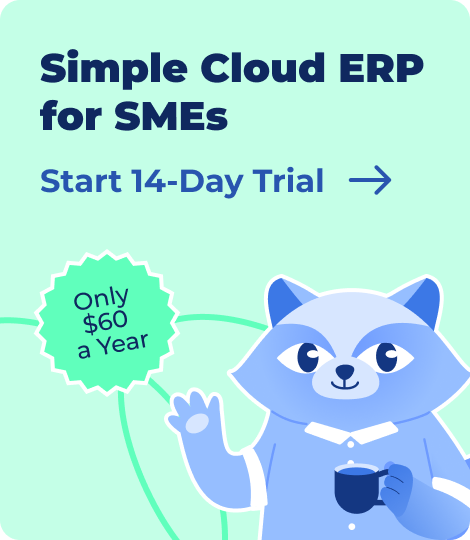To start a clothing business in India sounds exciting as well as challenging. The apparel sector is booming and getting good exposure to trends via social media and many e-commerce platforms.
Starting a clothing brand isn’t just about style or design.
- You’ll spend weeks — sometimes months — finding the right suppliers
- You’ll need to handle research, branding, storytelling, logistics, and customer experience
- You also have to know how to connect and relate to your target audience
From handmade labelling to streetwear, India’s apparel market is growing rapidly. Why now? Because Indian consumers have changed. They scroll through fashion on social media such as Instagram, pay through fast online payment like UPI, and order the brands they discover on social media.
This step-by-step guide walks you through everything you need to start a clothing business — from researching your niche and building a brand to sourcing manufacturers, launching online, and scaling smart. You’ll also find expert insights, real costs, and common challenges that new founders face — plus how to overcome them. If you’re serious about turning ideas into garments and garments into business, this is your blueprint.
- Exploring Market Opportunities in the Apparel Business
- Step 1: Research the Market
- Step 2: Develop Your Clothing Brand
- Step 3: Design Your Clothing Line
- Step 4: Source Manufacturers and Suppliers
- Step 5: Set Up Your Online Presence
- Step 6: Marketing and Sales Strategy
- Step 7: Launch Your Clothing Business
- Step 8: Challenges and Solutions
- Government Schemes and Support for Apparel Brands
- To Sum up
- Frequently Asked Questions About Starting a Clothing Business In India
- List of Resources
Exploring Market Opportunities in the Apparel Business
According to IBEF, India will become the second-largest economy in the world by 2030, with fashion and apparel leading the charge. Globally, the fashion market was valued at $1.42 trillion in 2025 and is projected to reach $1.78 trillion by 2030, growing at a CAGR of 4.63% according to a report by Mordor Intelligence. But it is not only about demand, it is about doing it right.
Expert
"The initial plan had to be adjusted along the way, "says Asenla Jamir, founder of Otsü Clothing Co, a slow fashion brand rooted in Naga textiles and rescued fabrics. With a background in fashion communication from NIFT Mumbai, she’s focused on blending cultural storytelling with sustainable practices. «It’s been a learning process at every stage — especially understanding production timelines, pricing, and market expectations».
With successful collections behind her, she is launching her first Ready-to-Wear collection through a pop-up event in Bombay, presenting her latest designs while honoring her Northeastern roots and cultural heritage. Her experience reflects what most new fashion founders discover: creativity is only half the game. The other half is logistics, supply chains, tech, and timelines.
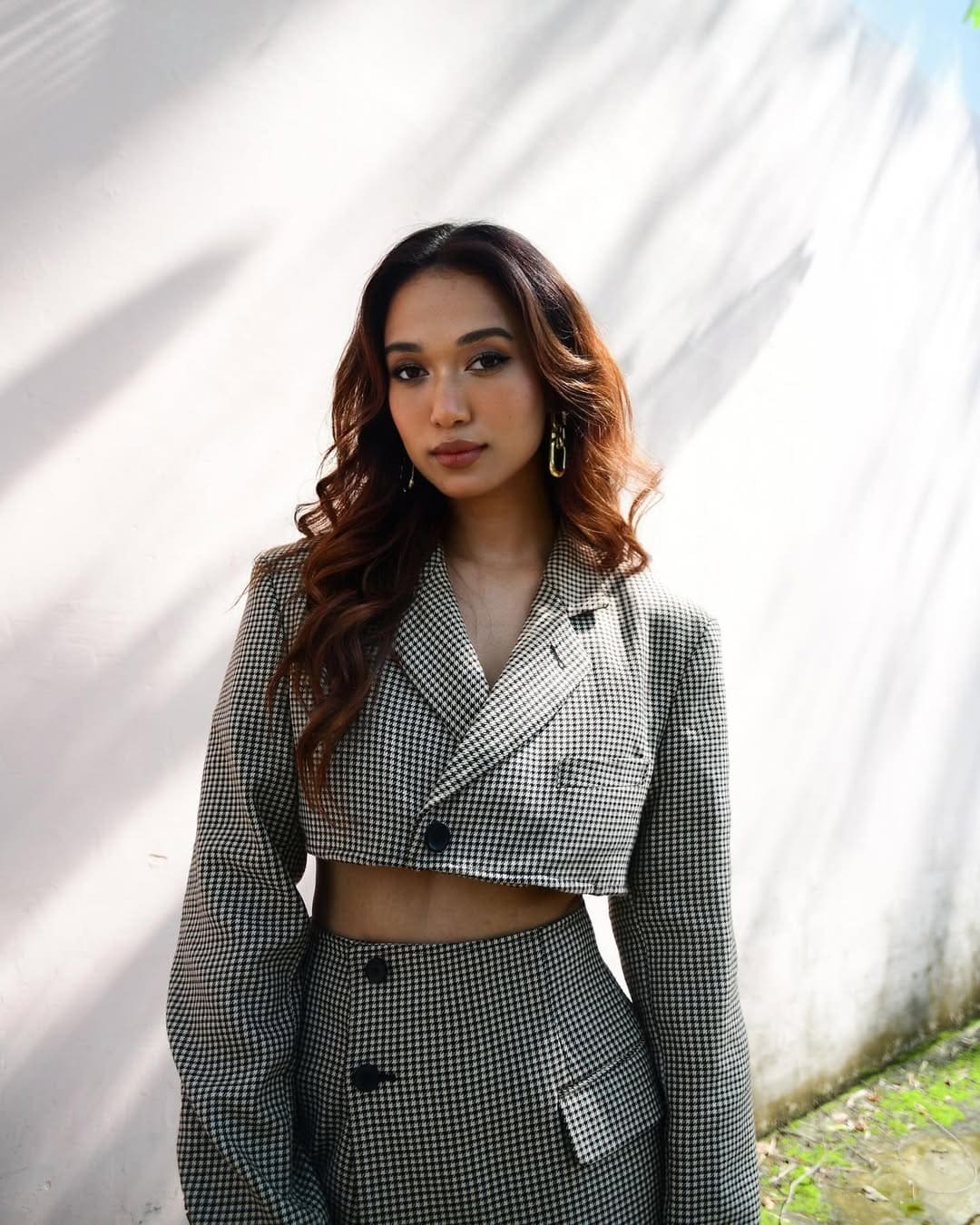
Step 1: Research the Market
Before you create your first design or choose fabric, you need to understand the apparel business market and target audience. Market research should be your first foundation. It is what separates a brand that connects from one that gets ignored.
Get to Know the Apparel Business Landscape
India doesn’t occupy just a single market. There are many markets in one. It includes:
- Urban metros
- Tier 1, 2 & 3 cities
- Regional wise
- Rural clusters
All these markets behave differently when it comes to fashion. For example, a crop top is standard in Mumbai, but someone might barely be wearing it in Kanpur. The preferences may vary by climate, culture, lifestyle, and income bracket.
Know Your Audience — Who’s Actually Going to Wear Your Clothes?
- Are they college-going students looking for affordable, trendy wear?
- Working professionals in need of simple, decent, and versatile pieces?
- Niche customers who value handloom, slow fashion, or oversized streetwear?
You can also research by utilizing your sources, such as:
- Trends on Google by adding keywords such as oversized t-shirt designs
- Instagram hashtags or YouTube shorts by exploring category looks in real life use
- Quora or Reddit by reading customers’ pain points in fashion-related threads
Expert Insight:
“I started by noticing a gap. People were drawn to Naga textiles but didn’t know how to wear them”.
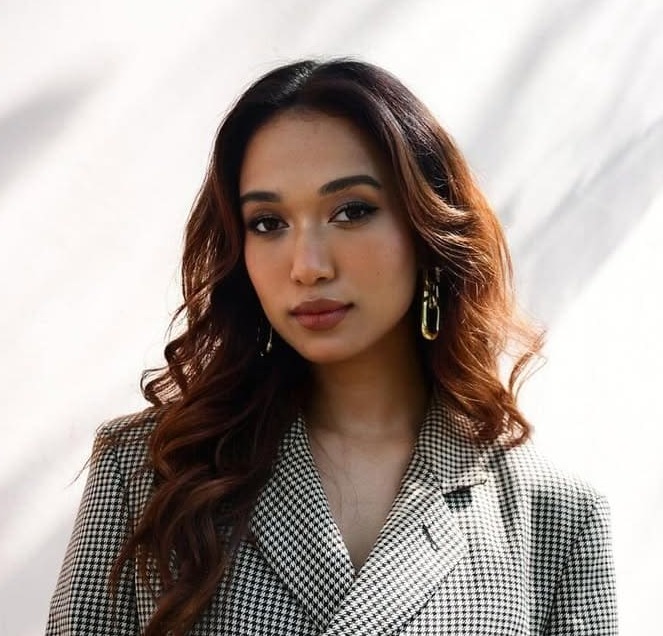
Like Asenla, use trends, forums, and marketplaces to identify what your audience likes and wishes they had.
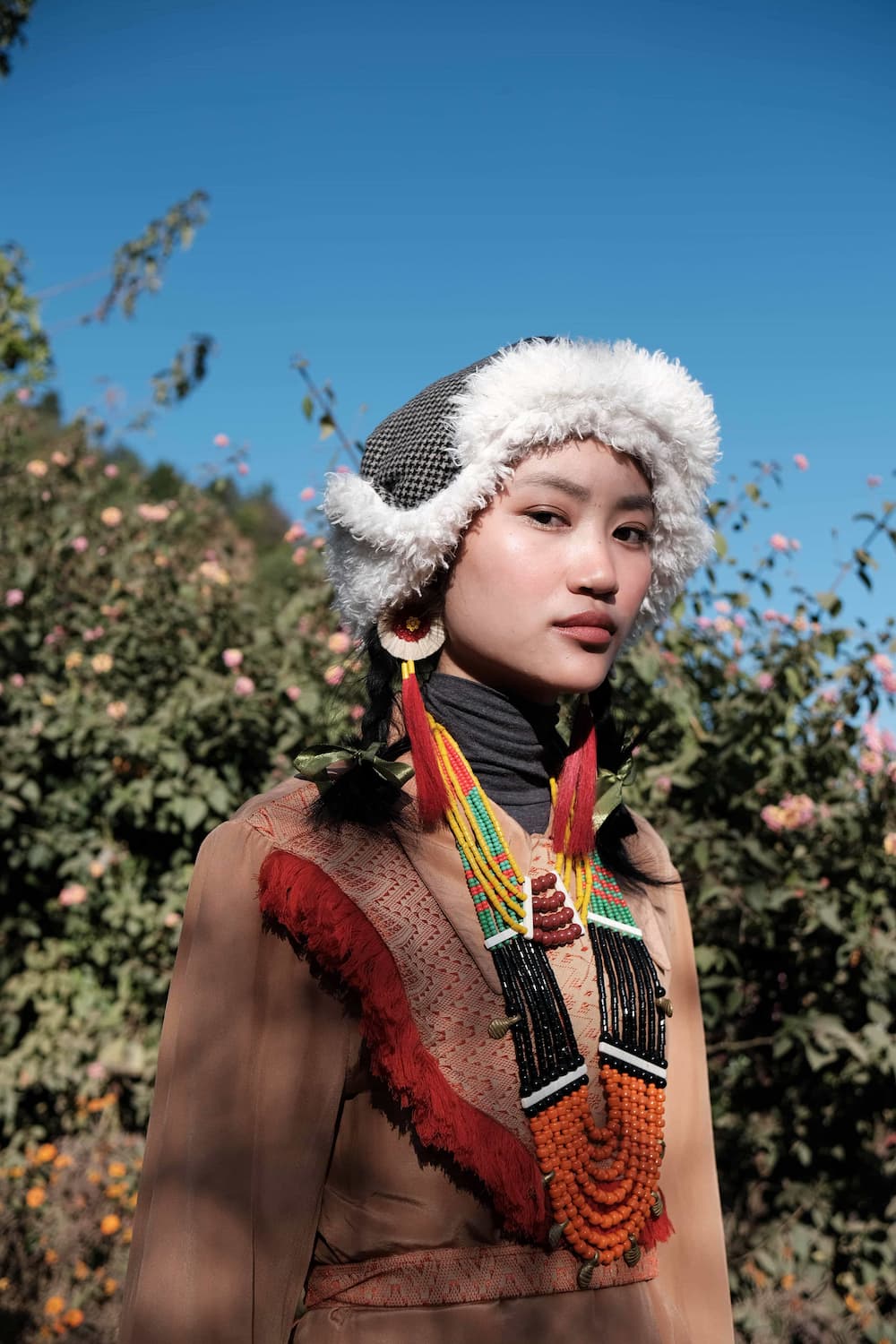
Keep Track of Competition
Don’t just track what other brands are selling. Ttry to pay attention to it carefully:
- Check the price points, like how much they charge and for what value.
- Do you check customers’ reviews, what they like, or what they complain about?
- Do you check the positioning, such as whether they are selling quality products. Culture? Utility? Trendiness?
- Keep track of the gap areas of what they are not offering that you could.
For example, suppose you notice multiple streetwear brands offering oversized T-shirts at ₹1,500, and hundreds of customers complain about their thin fabrics and untimely delivery. In that case, you can improve those areas and gain trust with the customers by offering them better. You can offer them faster shipping, attractive packaging, good relationships, etc.
Choosing between a Niche Apparel Brand and a General Clothing Line
Stand out or blend in? Many of the beginners fail to understand this part of the business. They try to appeal to everyone and get nothing. So, you shouldn’t be afraid to niche down. You can continually expand later once you grow your business. Starting with narrow tips that might help you, such as:
- Focus on your messaging
- Find your first 50 loyal customers at least
- Try to avoid a bloated inventory
Example of niche ideas:
- Plus-size ethnic wear for all age groups
For underserved customers looking for traditional styles in inclusive sizes.
- Minimalist everyday wear
For urban professionals and young adults who prefer simple, timeless clothing.
- Organic or sustainable clothing
For environmentally conscious shoppers focused on ethical fashion.
- Festival-inspired fashion with regional crafts
For Gen Z and millennial buyers seeking culturally rooted, statement pieces during festive seasons.
Once you understand all these aspects, everything else becomes easier to maintain. It is always important to zoom in before you scale out. Understanding your segment type helps you shape your brand, price, and promote your products in the real world.
📌 The founders of Hey Baby! chose to focus on a niche market — stylish business attire tailored specifically for Kazakh women in government and office roles. By designing around local body types, lifestyle needs, and cultural expectations, they offered a solution mass-market brands couldn’t. This niche focus helped them stand out quickly in Astana’s underserved market, where word-of-mouth fueled organic growth.
🚀 From Fabric to Fulfillment — Run Your Clothing Business Like a Pro with Kladana Garment ERP
Starting a clothing brand is just the beginning. But scaling it without stock errors, late dispatches, or mismanaged orders? That takes the right system.
Kladana garment ERP is designed for growing clothing and apparel businesses. Whether you’re launching your first collection or juggling orders across platforms, Kladana keeps you in control — no spreadsheets, no chaos.
What You Can Do with Kladana
📦 Track your apparel inventory in real time — by style, size, and warehouse
🪡 Manage fabric, trims, and clothing production batches in one place
🛒 Sync orders automatically with Shopify and WooCommerce
📈 See clear dashboards for stock movement, vendors, and sales flow
💬 Collaborate with your team — no more guesswork or miscommunication
🧵Create and manage BOMs (Bills of Materials) for every product or a component
🚚 Handle orders, invoices, and fulfillment from one central dashboard
Why Small Apparel Brands Choose Kladana
- 100% cloud-based — access it anywhere
- No tech background needed, free onboarding & support provided
- Affordable for small businesses, built to scale
Step 2: Develop Your Clothing Brand
Once you have identified your market and niche, the next step is to create a brand that speaks to them. In a sea of fashion content, your brand makes people stop scrolling to other brands. It shows your identity, visual, verbal, and emotional.
Why Is Branding Important?
Branding is crucial because it is not just your logo. It is the vibe and connection that customers get when they land on your page, unbox your product, or wear your design. It is why people pay more for something that makes them feel valuable and unique.
What Goes into a Clothing Brand
1. Name: Try to keep it memorable, easy to spell, and emotional touch.
2. Logo and Visual Style: You can utilize Canva or Figma initially for fonts, colors, and photography tone.
3. Brand voice: Fun and witty? Sophisticated and minimalist? Casual? This will influence everything from product descriptions to your DMs.
Expert Insights
“I wanted to create a brand that honors my roots while addressing the urgent need for sustainable practices in fashion.”

So, a brand should always reflect your values and the experience you provide with your product.
Develop a Style Guide
Even if you are a one-person team, create a document outlining:
- Your logo usage
- Your color codes
- Your voice and tone examples
- Your photo and layout examples
This helps you scale faster to deal with freelancers, interns, partners, resellers, bloggers, or other collaborators later.
Do not Skip Your Storyline
People just don’t buy clothes. They buy what they believe those clothes say about them. Your story should be authentic, woven into product tags, about pages, and social bios.
Step 3: Design Your Clothing Line
Design is where your vision becomes tangible. But contrary to what many think, you don’t need a degree in fashion to start a successful line. What you need is a process — one that balances creativity, customer needs, and production feasibility.
Start with Foundation and Fit
Yes, clothes have to look good, but they also need to be comfortable, whether you are designing workwear, loungewear, or fusion ethnic clothing.
You should also understand the needs of the customers, no matter what, such as:
- Consider sizing flexibility, especially for Indian body types
- Think about the climate that includes breathable fabrics in humid regions, and layers in colder areas
- Consider how it fits into daily wear, like washing, re-wearing, or work settings
Expert Insights
“We started by upcycling vintage clothing using rescued fabrics and Naga textiles. I worked closely with artisans to create our first capsule collections.”

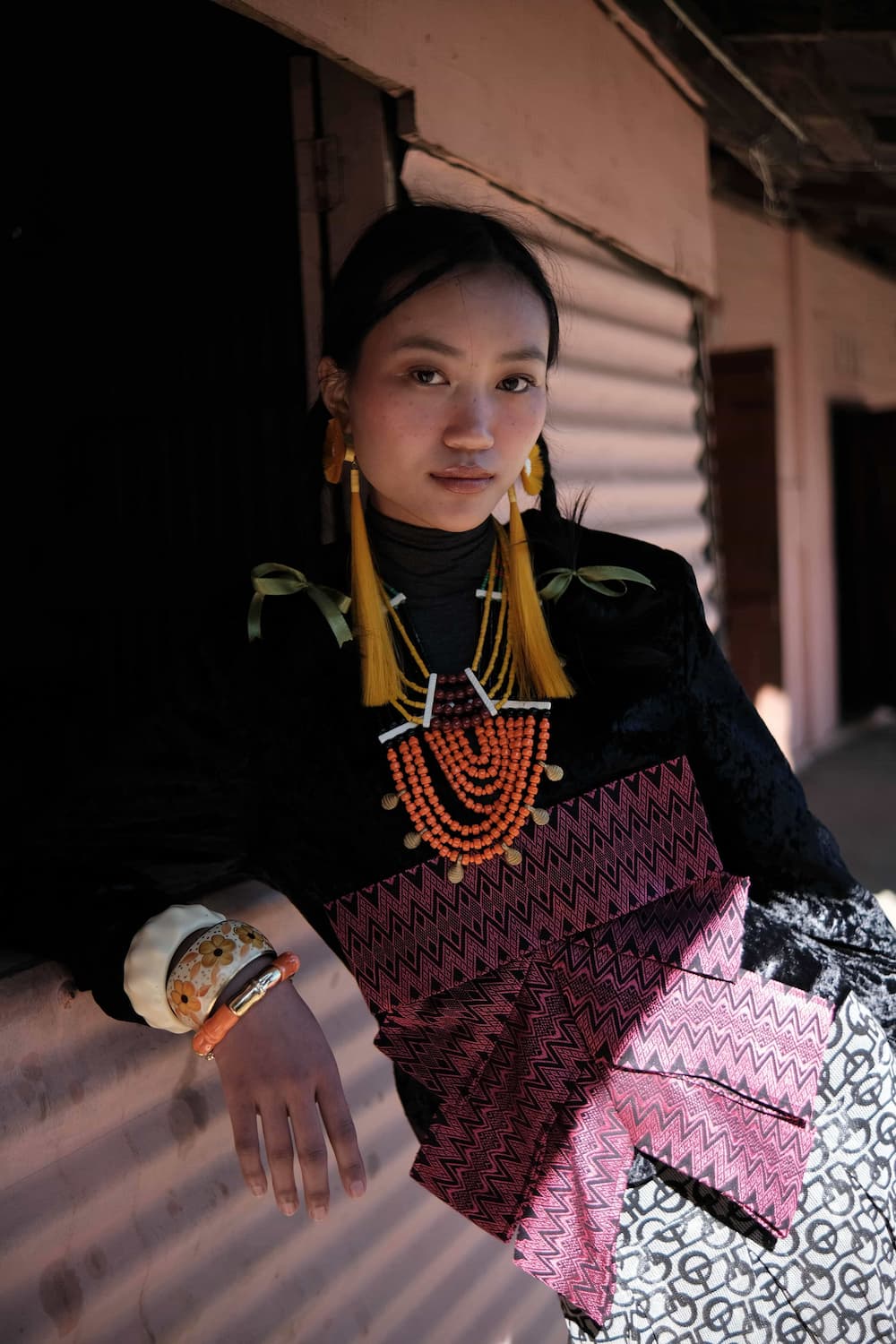
Start with a Capsule Collection
Start in a batch of 5–10 products or variants — a capsule collection that:
- Will reflect your identity
- Will test the waters for market demand
- Will not drain out your capital easily
For example:
- You can keep cotton fabrics in 3 colorways with two fits
- You can keep a single style of shirt with slight collar variations
- You can keep co-ord sets with mix and match tops and bottoms
Once your design is ready, you can:
- Create samples in your target fabric
- Wear and test them with friends or a team
- Collect feedback on fit, fall, finish, and fee
Design is not just about expression. It is a strategic phase where you can learn what is feasible, what it is like, and what should never make it to production.
Step 4: Source Manufacturers and Suppliers
Once you finish your design work, the next step is to find the right people to bring it to life. Your design is just half the struggle. The other half is getting it right. For garment production, you should have the proper manufacturer, fabric supplier, and logistic partners that will affect your quality, pricing, speed, and customer satisfaction.
📌 To scale efficiently while maintaining quality, Hey Baby! adopted a hybrid manufacturing model — 70% of their collection is produced abroad (in Turkey and China), and 30% locally in Kazakhstan. While outsourcing helped reduce costs and expand volume, refining complex designs still required local expertise. This balance allowed them to control quality while remaining price competitive.
Where to Find Suppliers
- IndiaMart: One of the largest B2B directories in India
- TradeIndia: Useful for textile-specific vendors
- Textile fairs and expos: IHGF Delhi Fair, India International Garment Fair
- Social Media Networking: Many boutique manufacturers actively post their work for recognition
Expert Insights
“Finding and working with local weavers and artisans was one of the first steps to building Otsü. Our hands-on approach ensured quality control and kept the story behind our products authentic.”

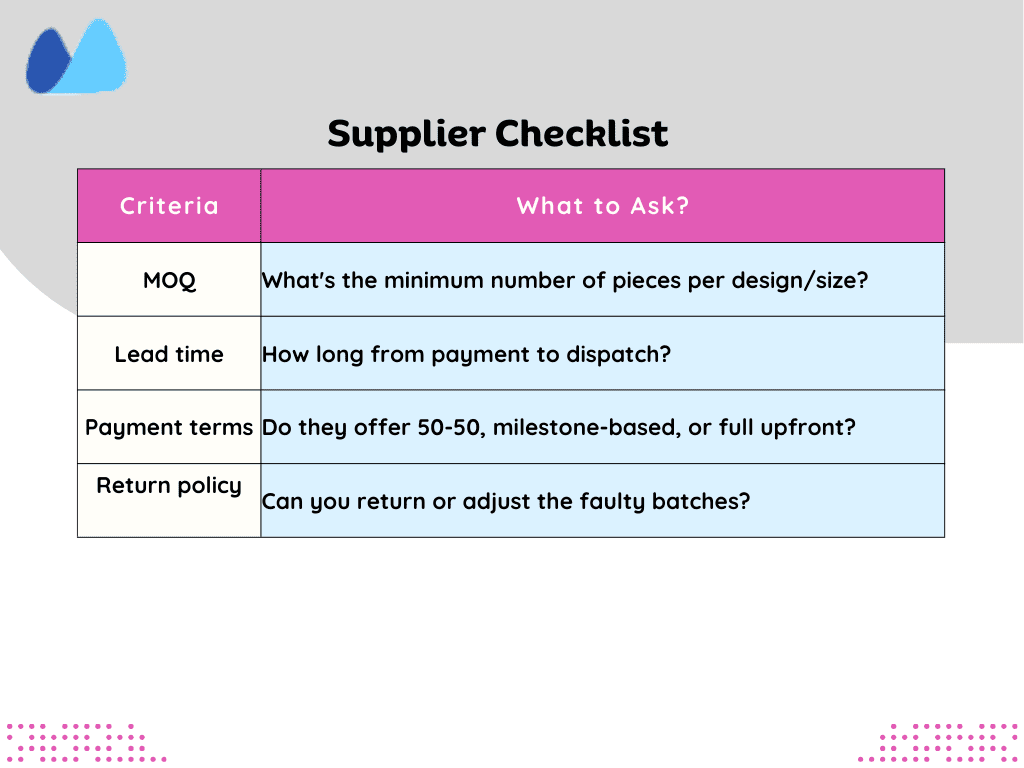
Is Sustainable Sourcing Right for Your Brand?
If sustainability is part of your brand:
- You should look into khadi boards, handloom clusters
- You should explore rescued fabrics in cities like Delhi, Surat, or Tirupur
- You can partner with NGOs or cooperatives supporting ethical labor
Expert Insight:
“Sustainability was always part of my approach — from working with artisans to choosing fabric. Otsü was born from the desire to keep cultural heritage alive in a modern, responsible way.”

Step 5: Set Up Your Online Presence
Having a strong online presence is not an option. It is a must. Whether you are building a full-fledged e-commerce brand or selling through social media, it depends on how you present yourself online and how many people discover trust, and buy from you.
This is an innovative approach for early-stage brands. You can focus on platforms where your audience already lives.
If you choose to build your website:
- Create a clean and user-friendly mobile-compatible
- Include high-quality product images
- Write clear descriptions with sizing help
- Add social proof, like reviews or press mentions, from clients
- Integrate a secure payment gateway, for example, Razorpay, PayU, etc.
Use Marketplaces to Your Advantage
When launching a new clothing line, building your own store isn’t the only option. Online marketplaces like Amazon, Flipkart, Ajio, or Etsy can help you reach a wider audience faster, test your products, and generate early sales — without upfront investment in a full e-commerce setup.
The online fashion retail market is experiencing rapid global growth, driven by rising digital adoption, fast fashion trends, and cross-border e-commerce. The projection below highlights how this sector is expected to expand from 2025 to 2029, offering strong opportunities for new clothing brands entering online marketplaces.
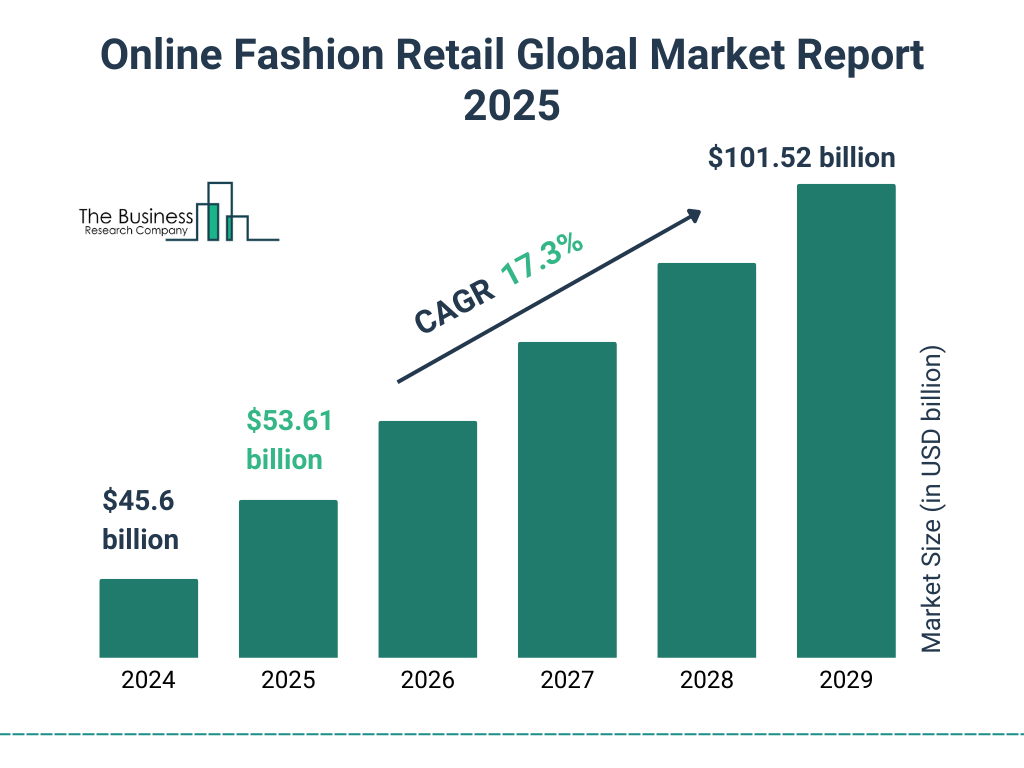
Choosing the right platform can make or break your early-stage clothing business. From global giants like Amazon and Etsy to regional favorites like Ajio and Flipkart, marketplaces offer quick access to customers, built-in traffic, and low entry barriers. The image below gives an overview of the best marketplaces and e-commerce platforms to consider when starting out.
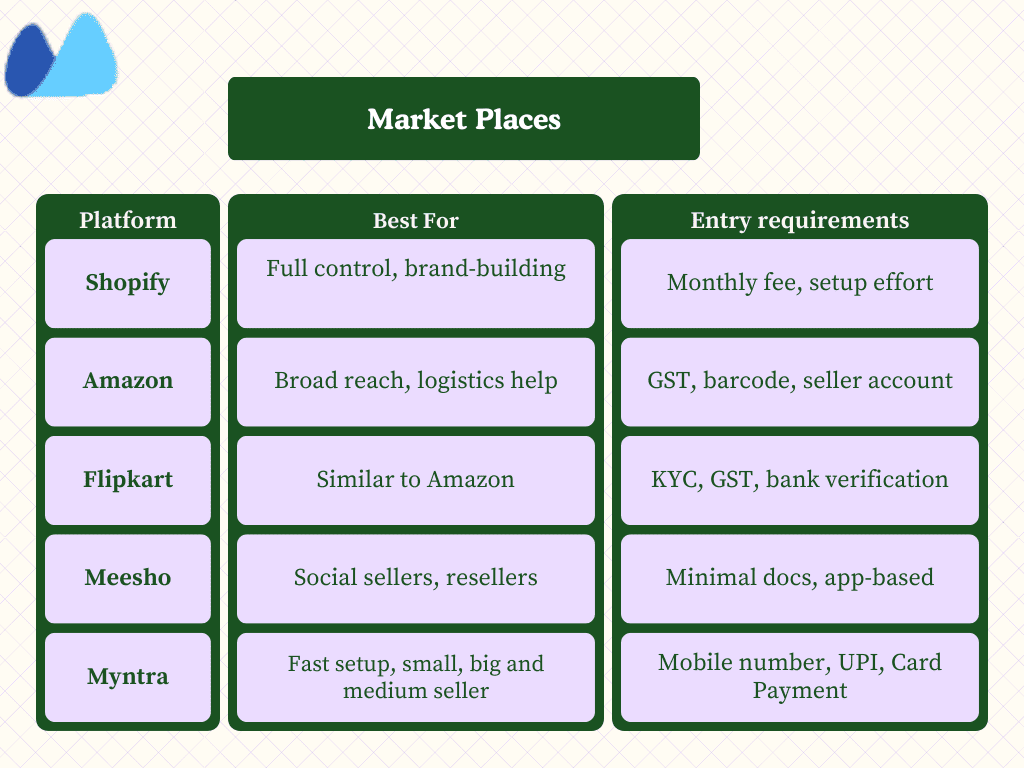
Step 6: Marketing and Sales Strategy
No matter how great your product is, it won’t sell out if no one knows it exists. Your marketing strategy must reach your audience, convey your story, and drive real conversions.
1. Build Awareness with Your Content
When you’re just starting out, few people know your brand exists — and that’s exactly what content marketing helps solve. It’s not just about posting pretty pictures; it’s about telling your story, educating your audience, and building a consistent brand voice across channels.
For clothing brands, content can be incredibly visual and engaging. You can showcase your design process, share styling ideas, document fabric sourcing, or explain the values behind your brand — like sustainability or inclusivity. This not only builds awareness but also emotional connection, which is key in a competitive fashion market.
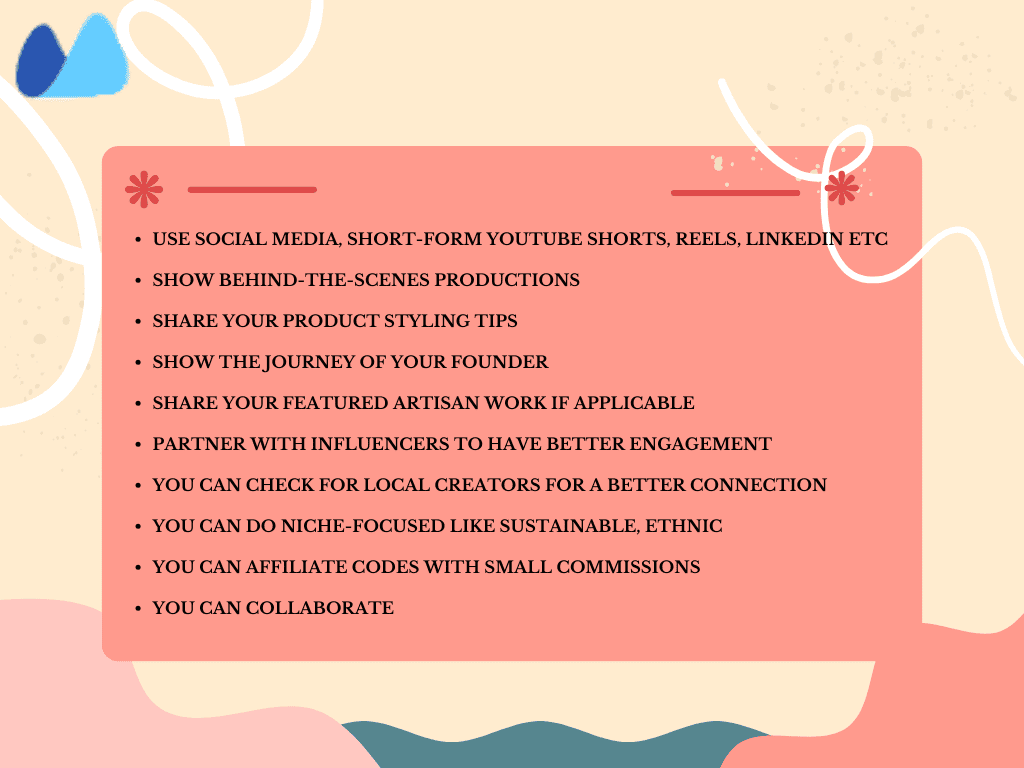
The goal is to become memorable and trustworthy before someone is ready to buy. If they’ve seen your lookbook, read your production story, or saved your styling reel, they’re far more likely to choose you when they’re ready to shop.
Industry Expert Insights
“We focus on storytelling through Instagram, magazines, lifestyle websites, features, pop-up events, and word-of-mouth.”

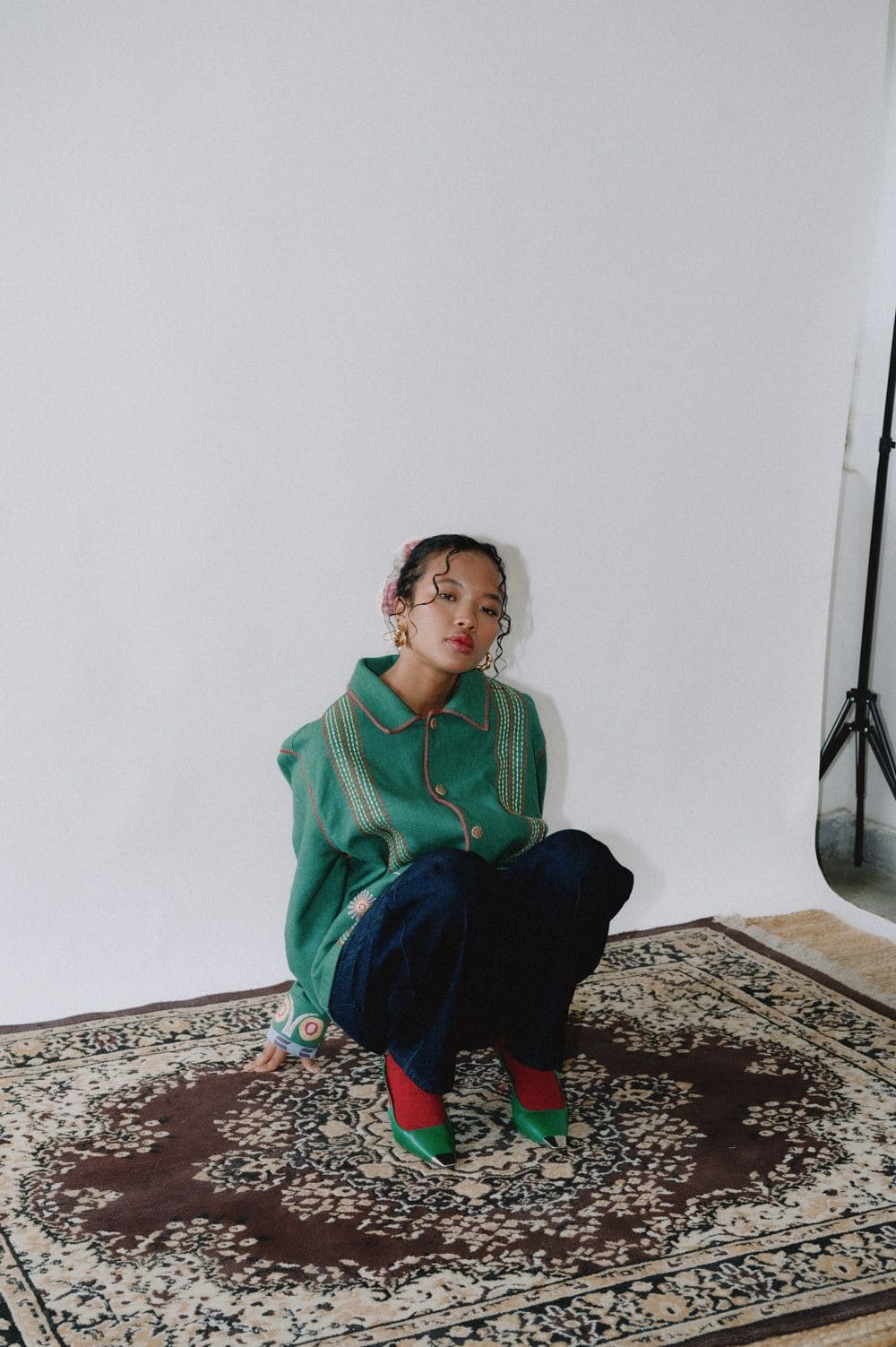
2. Pop-Up Events and Offline
Offline can still boost brand awareness; you can use options like:
- Weekend flea markets
- Fashion events
- Boutique collaborations
- Campus fests or exhibitions
This is especially very helpful when you want direct feedback, customer interaction, and offline brand visibility
📌 For example, Many Indian Indie brands like Otsü launch new collections at curated lifestyle pop-ups to reach design-conscious, high-intent shoppers.
📌 Pop-up events and offline exhibitions played a key role in Hey Baby! ’s early growth. The founders traveled across Kazakhstan to showcase their collection at regional designer shows and introduce the brand to new audiences. While it might sound exciting, the reality was far more demanding — constant flights, two overweight suitcases, and limited recognition. Some experienced designers dismissed their work, even labeling them “homegrown,” but these face-to-face encounters helped the brand connect with real customers, gather feedback, and build credibility from the ground up.
📊 According to a global report by Mordor Intelligence, rising customer acquisition costs drive brands to invest more in CRM, retargeting, and automation to retain buyers and increase lifetime value.
Step 7: Launch Your Clothing Business
The launch is your moment to show up, not just with the products but with a presence. A good launch builds momentum, attracts early adopters, and sets the tone for your brand.
1. Prep Your Inventory and Fulfillment
- You should make sure that your inventory is updated
- Double-check your product SKUs and barcodes, if any
- You should confirm logistics, packaging material, courier partnerships, and delivery timelines
So, before you go live, take a hard look at your numbers.
Expert Insights
“I initially estimated, and set an investment of around ₹4–5 lakhs, but I ended up spending closer to seven lakhs — mainly due to unexpected material costs, sampling, and branding needs.”

📌 Tip: This is common, so add a 10–15% buffer to your plan number. That extra space can help you handle last-minute production tweaks, packaging, or promotional pushes without panic.
📌 To launch their first workshop in Almaty, the founders of Hey Baby! secured a $51,000 loan. The loan proved to be a smart investment — the company nearly doubled its annual turnover within a year, growing from $125,000 to $262,000.
2. Choose Your Launch Format
- You can do a soft launch, like send to friends, family, and the early waitlist
- You can do a pre-order model, announce the product, and start taking pre-orders
- You can do advertisement or promotion on social media, such as product drop time, build hype with countdowns
3. Build a Launch Checklist
| Launch Task | Deadline |
Product Photoshoot |
10 days prior |
Final inventory count |
7 days prior |
Email/WhatsApp list prep |
5 days prior |
Website/Shopify checks |
3 days prior |
Press release/influencer seeding |
2 days prior |
Launch day social posts |
Day of launch |
Customer Service Readiness |
Day of launch |
4. Post-launch
You should never ghost your audience after day one of your launch. Instead, you can share real-time orders or updates, post unboxing reviews from buyers, announce a restock or new drop timeline, etc.
📌 Avoid this:
- Launching with no plan for delivery delays
- Having no size exchange or refund strategy or returns
- Skipping on professional product photos
Step 8: Challenges and Solutions
When you start a clothing business, it might look glamorous at first, but you should understand the reality and the hurdles. Knowing the common challenges will help you plan better and avoid future errors. Here are some of the key roadblocks most founders face and how to solve them.
1. Inconsistent Fabric Supply
One of the most common challenges is finding a good fabric, and customers love it, but suddenly, one day, you run out of vendors, and you don’t find a replacement.
Solutions:
- Maintain a good relationship with vendors, or have a backup
- Buy buffer stock for bestsellers
- Source Plus Markets
Expert Insights
“One of the biggest challenges is sourcing consistent-quality vintage pieces, natural fibre fabrics, and rescued textiles. Ironically, customers love the uniqueness these challenges create.”

2. Managing Production Timelines
When your production replacement meets customers’ expectations, it will make them unhappy and lose momentum.
Solutions:
- Set realistic timelines and add a buffer
- Keep track of design, sampling, and clothing production
- Communicate with your audience and update them about any kind of delay in their product delivery, etc
3. Poor Quality Control
When you scale, you might sometimes lose visibility over finishing, switching, or even labeling. You should be very careful in these matters.
Solutions:
- Set clear Quality Control steps after each phase of production
- Train your employees or tailors properly in finishing checks
- Ship only after a thorough inspection of your products
4. Budget Miscalculations
It is very easy to estimate your costs from packaging to sampling to shipping returns, but sometimes, the calculation goes wrong.
Solutions:
- You need to keep track of all your expenses in detail
- You should add at least a 10–20% buffer to your projected capital needs
- You should try to start from low-cost or DIY tools for the early stage of marketing and operations
5. Staying Consistent
One of the biggest internal challenges is staying on. It can be anything, such as your content, quality, and growth habits. Sometimes, the calculation goes into operations.
- You can focus on doing fewer things well, like one collection, one platform, etc.
- You can create templates to speed up repeat tasks
6. Regulatory and Legal Gap
Initially, you might miss out on many basics as a founder, but you must always do your business registrations and tax filings.
Solutions:
- Register under the MSME for benefits
- Set up GST if you sell online
- Hire a CA or a legal advisor
Expert Insights
“Start small, test your product with real customers, stay flexible and always stay true to your core values — building a strong foundation matters more than rushing growth”.

Government Schemes and Support for Apparel Brands
India offers many government-backed initiatives for entrepreneurs, especially early-stage start-ups. Whether it is funding, training, or infrastructure set up, here is a breakdown for you to understand and implement, tailored for clothing and apparel entrepreneurs.
Why does it matter?
Clothing founders often neglect these resources, thinking they are meant only for factory setups or export giants. They are wrong. Many of the schemes cater to SMES and government-backed time founders.
For example, especially early businesses under the MSME (Udyam) scheme will not only open a breakdown of subsidies, but also strengthen your brand’s credibility in B2B partnerships.
| Schemes | Description | Eligibility Criteria | Application Link |
Start-up India |
It will provide you with tax benefits, easy compliance, and funding support |
You should be recognized as a startup under DPIIT — Department for Promotion of Industry and Internal Trade |
|
MSME Udyam Registration |
It will offer you access to government schemes, subsidies, and easier credit facilities |
Micro, Small, and Medium Enterprises (MSMEs) |
|
PM MITRA Scheme |
It aims to develop integrated textile parks to boost the textile industry |
Textile Industry stakeholders |
|
SAMARTH Scheme |
Focus on skill development in the textile industry |
Textile workers and Industry participants |
|
MUDRA Loans |
It provides micro financing to non-corporate, non-farm small/micro enterprises |
Non-corporate small business sectors |
These aren’t just funding sources. They boost skills, scale manufacturing, and encourage regional brands to go national and international.
Before you apply, check this:
- Your business type and revenue bracket
- Your basic documents (PAN, Aadhaar, business registration)
- Whether you need a DPIIT or MSME certificate
It will help reduce your financial pressure and build your business with long-term support without stress
To Sum up
Growing a clothing business in India is not only about investing but also about making the right decisions in the right direction. Whether starting in a living room or setting up a fall studio, the principles will remain the same. What sets you apart is not only design, but also the strategy you make.
This roadmap gives you the steps from pricing your first shirt pieces to managing 200 orders a month. But remember, learning will not stop here. The best founders are the ones who can adapt faster, listen to customers’ needs, understand them, and never forget the reason why they started.
Frequently Asked Questions About Starting a Clothing Business In India
How much does starting a clothing/apparel business in India cost?
Starting small can cost around ₹4–7 lakh, including sampling, production, marketing, and branding. Your cost will vary based on scale and whether you launch offline or online.
Do I need a fashion degree to start a clothing business?
No, not really. Many successful founders started without a formal degree in fashion. What matters most is your understanding of starting production and creating good-quality signs with fit and finish.
Is the clothing/apparel business profitable in India?
Yes, if done right. With growing demand and digital buys, margins will depend on your niche, cost control, and strong branding.
How do I find reliable fabric suppliers or manufacturers in India?
Use platforms like IndiaMart, TradeIndia, textile expos, and social media. Always request samples, check MOQs, and start with a small batch to test quality and timelines.
What are some government schemes for apparel entrepreneurs?
You can explore sites like MSME registration, Buy-Up India, PM MITRA for textiles, SAMARTH for skill training, and MUDRA loans for micro-financing.
Which platform is best to sell clothes online in India?
Shopify, Amazon, Flipkart, Meesho, and Myntra are great options. The choice depends on your product type, budget, and customization needs.
How many products should I start with?
Start lean with 10–15 products or SKUs. A focused capsule collection helps test demand, manage cost, and refine your brand message.
What licenses or registrations do I need to start?
You need GST registrations, MSME (Udyam), a trademark (optional but recommended), and a current running business account. If selling online, seller accounts are required per platform.
How can I manage stock and orders more frequently?
Use tools like Kladana ERP to track inventory, manage focused capsule collections to avoid stockouts, especially as you scale.
What are the biggest mistakes to avoid when launching a clothing business?
The top mistakes are overproducing inventory without demand, skipping quality control, and underestimating customer experience.
List of Resources
- IBEF — Indian Consumer Market
- PM MITRA Parks — Mega Integrated Textile Region And Apparel PM Mitra
- MUDRA Loan — Pradhan Mantri MUDRA Yojana (PMMY)
- SAMARTH — Scheme For Capacity Building in Textile Sector
- Ministry of Textile Portal — Website of the Ministry of Textiles
- Udyam registration — Registration Portal
- Start-Up India — Startupindia.gov.in
- Mordor Intelligence — Industry reports on the apparel market
- Business Research Company — Online fashion Global Market report
Read‑alikes
How To Start a Garment Manufacturing Business in India: Costs, Licenses & Expert Insights
How to Create a Clothing Brand and Increase Turnover from $125,000 up to $262,000 in a Year
Top 10 Manufacturing Business Ideas in India: Start with ₹5+ Lakhs & Earn Up to ₹6 Crore Annually
Costing Methods and Approaches: A complete guide for Manufacturing & Inventory
10 Applicable Business Improvement Ideas for Small and Medium-Sized Enterprises
How to Improve Sales: 10+ Tips for Small and Medium-Sized Businesses
